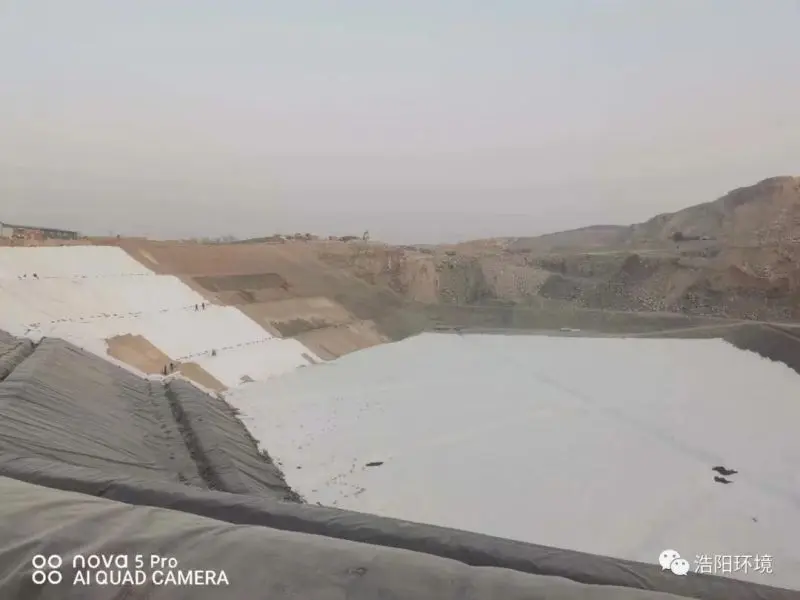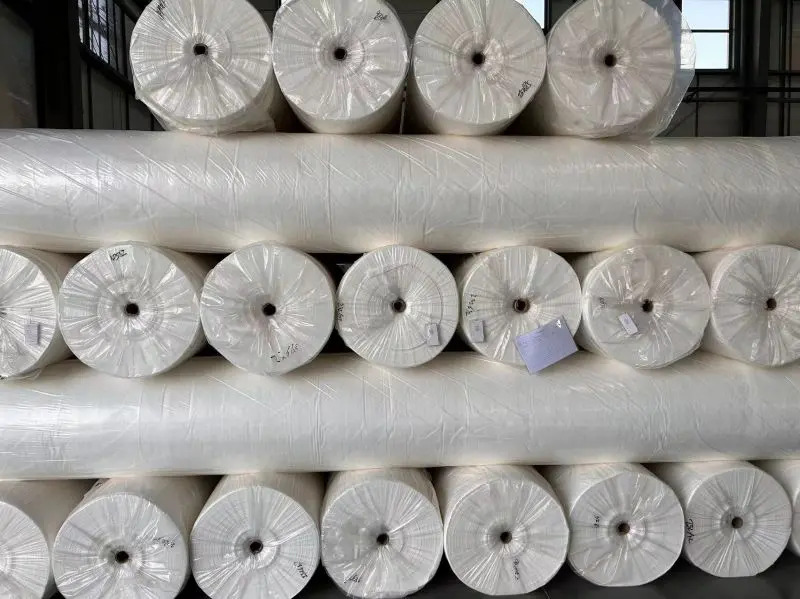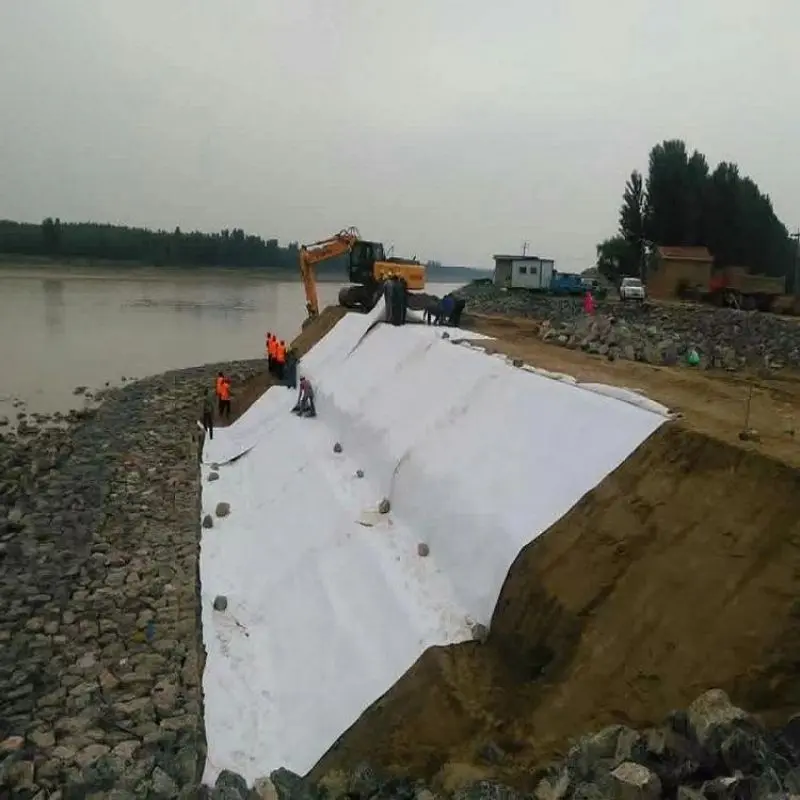Retaining walls serve as essential structures in landscaping and civil engineering projects, holding back soil to prevent erosion and maintain the integrity of landscapes. One crucial component in ensuring the longevity and stability of a retaining wall is the installation of geotextile fabric behind it. Geotextile fabric acts as a barrier, preventing soil erosion and providing additional support to the structure.
What is geotextile wall fabric?

Geotextile fabric for walls, also known as geotextile wall fabric or wall geotextile, is a specialized type of fabric designed for use in various wall construction applications, particularly behind retaining walls. It is typically made from synthetic materials such as polypropylene or polyester, which offer excellent strength, durability, and permeability properties.
The primary purpose of geotextile fabric for walls is to provide reinforcement, filtration, and drainage capabilities to the wall structure. When installed behind a retaining wall, the fabric acts as a barrier between the backfill material and the soil, helping to enhance the wall's stability and longevity .
Geotextile fabric for walls comes in various thicknesses, strengths, and permeabilities to suit different project requirements. It is available in rolls or sheets for ease of installation and can be customized to fit the specific dimensions of the wall. Proper selection and installation of geotextile fabric are essential for ensuring the effectiveness and long-term performance of retaining walls and other wall structures.
Here’s a detailed guide on how to install geotextile fabric behind a retaining wall:
Materials Needed

Geotextile Fabric: Select a high-quality geotextile fabric suitable for the specific requirements of your project. The fabric should be durable, resistant to tearing, and capable of withstanding environmental factors such as UV exposure and soil acidity.
Retaining Wall Blocks or Stones: Depending on the design and size of the retaining wall, acquire the necessary blocks or stones for construction.
Backfill Material: Choose a suitable backfill material such as gravel or crushed stone. The backfill material should be well-draining to prevent water buildup behind the retaining wall.
Shovel or Excavator: For digging trenches and preparing the area behind the retaining wall.
Utility Knife or Scissors: To cut the geotextile fabric to the required size.
Stakes or Pins: Used to secure the geotextile fabric in place.
Requirements for Geotextile Fabric
Strength: The geotextile fabric should have a tensile strength of at least 200 pounds per inch (3500 N/m) in both the machine and cross-machine directions. This ensures that the fabric can withstand the pressure exerted by the backfill material and the soil behind the retaining wall without tearing or stretching.
Permeability: The geotextile fabric should have a permittivity of at least 0.05 sec^-1 (5 x 10^-2 sec^-1) to allow for adequate water flow. Additionally, the fabric should have a permittivity ratio of less than 3, indicating that it prevents the migration of soil particles while still allowing water to pass through. This helps maintain proper drainage behind the retaining wall and prevents the buildup of hydrostatic pressure.
UV Stability: Choose a geotextile fabric with UV stabilization that meets or exceeds ASTM D4355 standards. This ensures that the fabric has excellent resistance to degradation caused by prolonged exposure to sunlight. A UV stabilization rating of at least 70% retention of tensile strength after 500 hours of exposure to accelerated UV light is recommended. This ensures the longevity and durability of the fabric in outdoor applications, prolonging the life of the retaining wall system.
Meeting these specific requirements ensures that the geotextile fabric provides adequate strength, permeability, and UV stability, essential for its effective performance behind a retaining wall. It ensures the structural integrity of the wall, proper drainage, and long-term durability in various environmental conditions.
Step-by-Step Installation Guide

Gather Necessary Materials and Tools:Before you begin, gather all the materials and tools required for the installation. You will need geotextile fabric, stakes or landscaping pins, a shovel, a utility knife, measuring tape, and backfill material such as gravel or crushed stone.
Prepare the Site:Clear the area behind the retaining wall of any debris, rocks, or vegetation. Ensure the surface is clean, smooth, and free from any obstructions that could interfere with the installation process.
Measure and Cut the Fabric:Measure the height and length of the retaining wall to determine the dimensions of the geotextile fabric needed. Add extra length for overlap and cutting allowances. Use a utility knife to cut the fabric to the required size accurately.
Position the Fabric:Place the geotextile fabric against the backfill material of the retaining wall, ensuring it covers the entire area to be backfilled. If the wall is segmented, overlap the fabric between sections by at least 12 inches to prevent soil seepage.
Secure the Fabric:Use stakes or landscaping pins to secure the geotextile fabric in place along the top edge of the wall. Space the stakes or pins approximately every 12 inches along the length of the fabric to ensure it remains firmly anchored.
Trim Excess Fabric:Trim any excess fabric along the edges of the retaining wall using a utility knife. Ensure the fabric fits snugly against the backfill material without any loose or overhanging sections that could compromise its effectiveness.
Backfill the Wall:With the geotextile fabric securely in place, begin backfilling the retaining wall with the chosen material, such as gravel or crushed stone. Compact the backfill material in layers as you fill behind the wall to provide stability and support.
Inspect and Adjust:After backfilling, inspect the retaining wall and geotextile fabric to ensure everything is properly installed. Make any necessary adjustments to the fabric or backfill material to address any issues or discrepancies.
Complete the Wall:Finish the retaining wall construction according to your design plans, whether it involves adding capstones, planting vegetation, or other finishing touches. Ensure the geotextile fabric remains properly secured throughout the completion process.
Regular Maintenance:Schedule regular maintenance of the retaining wall and geotextile fabric to ensure their long-term durability and effectiveness. Inspect the wall periodically for any signs of damage or erosion, and make repairs or adjustments as necessary.
By following these steps and using high-quality geotextile fabric, you can effectively install a barrier behind your retaining wall, enhancing its durability and performance while minimizing soil erosion and drainage issues. Regular inspection and maintenance of the retaining wall and geotextile fabric are recommended to ensure long-term effectiveness and structural integrity.
Contact Us
Haoyang Environmental is a leading manufacturer of geotextile fabric, boasting its state-of-the-art factory facilities. With a commitment to quality and innovation, we specialize in producing high-performance geotextiles tailored to meet diverse project needs. Our products serve various industries, including civil engineering, construction, landscaping, and environmental protection. Backed by cutting-edge technology and a skilled workforce, we strive to deliver reliable solutions for soil stabilization, erosion control, drainage management, and reinforcement applications. Trust Haoyang Environmental for superior geotextile solutions that ensure durability, efficiency, and sustainability in every project.
897.webp)
942.webp)
237.webp)